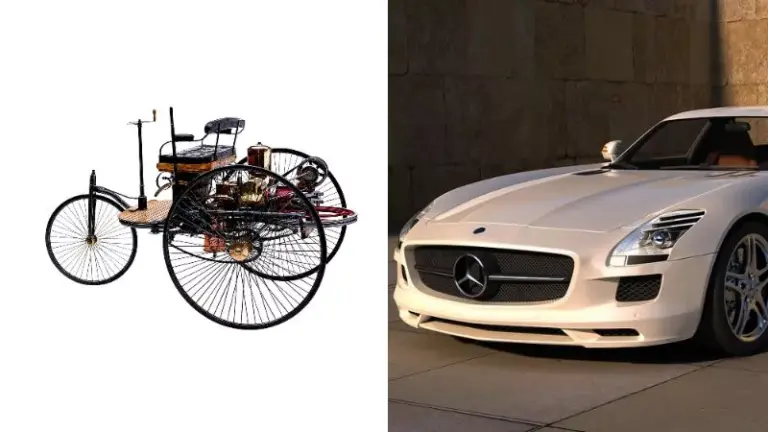Every day we buy and use objects that entertain us or make our lives easier. For the most part, we don’t even really give a second thought to how these products were developed or even when they were invented. From that iPhone in your hand to the car driving down the street, we just see modern technology that is around us every day. Well, it turns out a lot of everyday items we use are actually quite old technology. That is, they were invented generations ago and were simply updated and modernized every now and then to get us where we are today from sunglasses to baby strollers, you’ll be surprised at how many things look nothing like they used to.
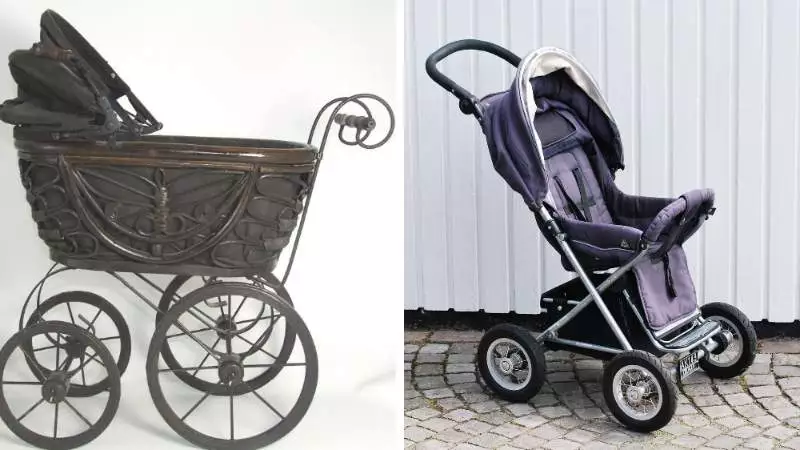
#1. The Baby Stroller
Today, it’s common to see parents out on a nice day walking or running along while they push a stroller. In fact, if you’ve ever gone stroller shopping then you know that it’s a super serious industry, complete with all sorts of specifications related to durability, performance and safety ratings. Yes, the stroller is pretty much sold to parents as if it were a car. However, the baby-mobiles we use today are actually quite different looking than the first strollers. Heading back all the way to the 1700’S the first strollers were custom made and affordable only if you were extremely wealthy. They were also pretty unstable and designed to be pulled behind you – or even a small animal if you wanted. It wasn’t until the mid-1800’S that the push stroller came about but even then it still looked pretty different to today’s models. In the 20th century, strollers basically became bassinets on wheels. Heavy and large, some parents added a lighter ‘Umbrella’ stroller to their collection because it was much easier to store and move around. Today, the baby stroller looks incredibly futuristic compared to the old designs. With sleek aerodynamic designs, brakes and beefy tires for off-roading these things look nothing like their original designs.
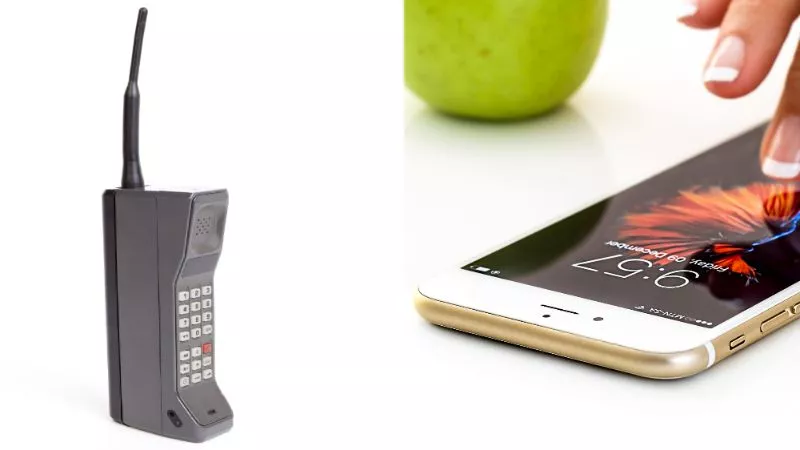
#2. The Phone
It is absolutely crazy how much the telephone has changed in just the last 20 to 30 years. Today, the majority of us carry our phones in our pockets everywhere we go. They all pretty much look the same. Whether an iPhone or a Samsung, they’re slim and fit easily in the palm of your hand. This couldn’t be more different than telephones found 100 years ago. In fact, the first telephone calls were made around 140 years ago. The equipment was bulky and it all looked nothing like the device we use today. Even into the 20th century, the phone was large, had a big handset and needed a cord running from that handset to the base unit. Sure there were improvements such as buttons replacing the rotary wheel, and even cordless home phones became widespread after the 1970s. However, the phone was still big and bulky. In the 90s, large advances were made in cell phone technology. Again, however, it would take several years to shrink down the large brick-like devices made famous by Zac Morris to something a bit more recognizable by today’s standards.
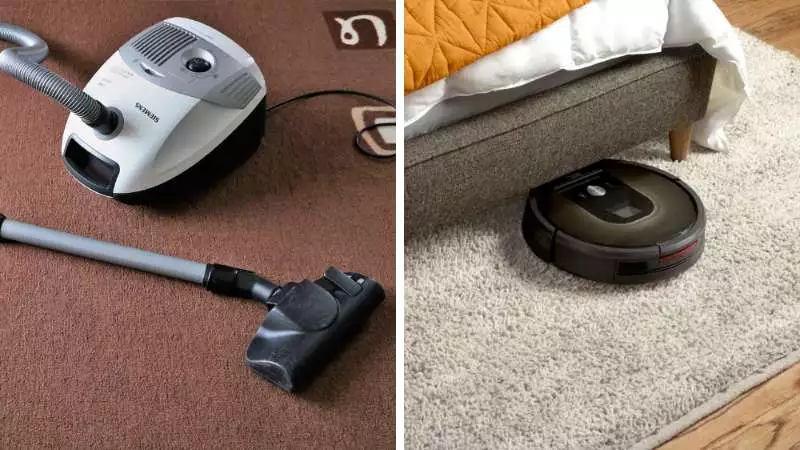
#3. The Vacuum Cleaner
Ok, so we realize talking about vacuum cleaners isn’t that exciting unless your last name is Hoover or Dyson. Nonetheless, the history of the domestic vacuum cleaner goes all the way back to the early 1900s. After decades of messing around and trying to figure out how to effectively suck up dirt, the first commercially available version was a foot-powered pump attached to a hose. A few years later in 1907, William Hoover produced the first electrically powered upright vacuum. For nearly the next 100 years, vacuums changed very little in overall design. Sure, they were built with different materials and the designs were altered depending on what company you were talking about but overall the vacuum remained pretty familiar looking. Then, in the early 2000s things changed. No, we’re not talking about Dyson, because those still had the familiar in traditional vacuum shape. Instead, we’re thinking about the rise of the robotic vacuum. Looking absolutely nothing like a regular vacuum, manufacturers like Roomba and Mito began selling their systems. There were no hoses or cords. Instead, the vacuum simply became a small device that moved around the floor on its own and sucked up any dirt and debris. Ah, the future. Amazing.
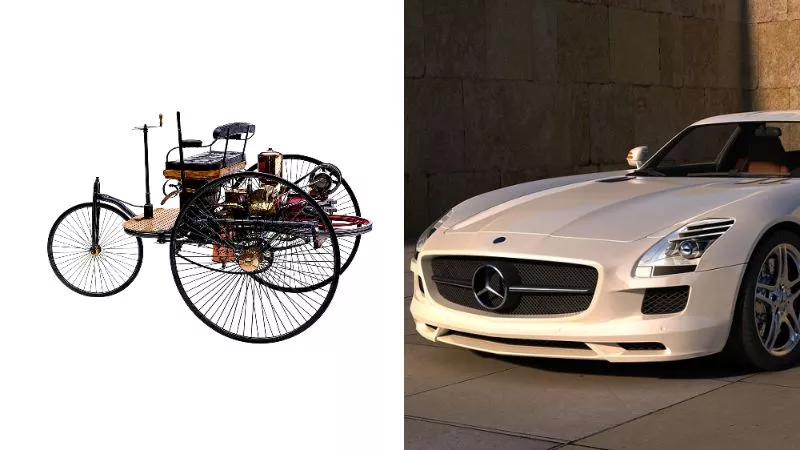
#4. The Car
The automobile is definitely an everyday item. They are so common that unless it’s a truly rare or amazing exotic brand, we likely won’t even give it a second look. That said, the cars we have today are incredibly different from the first vehicles produced over 100 years ago. Sure, those early models had wheels, a steering wheel, an engine and seats – but the similarity is pretty much stopped there. Just look at what some people considered to be the first true car. Designed by Carl Benz, the Benz patent motor car is incredibly primitive looking by today’s standards. It had three carriage wheels, a bizarre vertical steering column and a pretty basic bench seat. Powered by a SUB-1 Horsepower engine, this thing was as fast as it looked. Fast forward to today and even the cheapest cars you can find bear little direct resemblance to Benz’ first vehicle. In fact, if we compare Mr. Benz’ first automobile with today’s Mercedes SLS AMG, we think the differences are more than clear. We bet even Mr. Benz himself would have no idea how to get into the newer performance vehicle. Alright, it’s time for us to ask you a Quiz Question. Odds are you have a television or two in your home. Do you know the amount of time and average American spends watching television per day? Think about your answer while we show you five more everyday objects that have changed quite a bit.
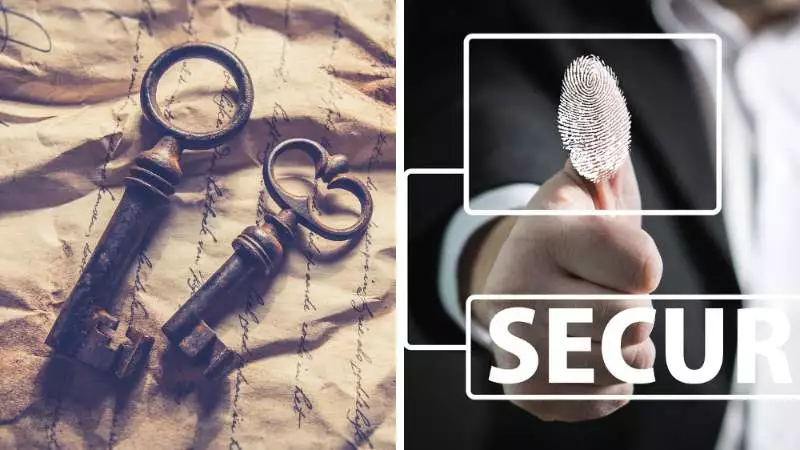
#5. Keys
For many of us, if you mentioned keys, we picture those small metal things with bumps and teeth that are on our keychain. You know – those things we are constantly losing or forgetting? There are your car keys and apartment keys and that one strange key that you aren’t really sure what it opens but you don’t want to get rid of it either. Well, in actuality, keys have come a very long way since the days of the ancient Egyptians. Today, the classic key is still in use and shares many similarities with its ancient sibling. However, there are quite a few keys that we use more and more which look nothing like the metal openers we are so familiar with. Think of the key cards used by hotels. What about the fobs that have replaced keys and push-button start cars? Our eyes and fingerprints have become keys for our phones and computers. In fact, even our smartphones are now capable of unlocking and starting our vehicles. In all of these instances, these things are incredibly different looking than what we traditionally think of as a key.
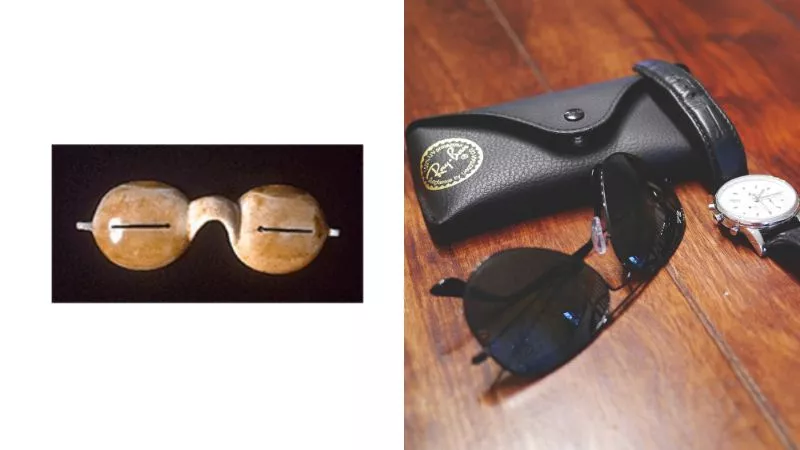
#6. Sunglasses
Every now and then they may change shape or fall out of style, but we think sunglasses have pretty much looked the same from the start. After all, aviator glasses have been around for a really long time and they generally look the same. Companies like Oakley and Ray-Ben are always changing their frame and lens designs yet, ultimately, sunglasses are sunglasses. Right? Well, you’ve probably been able to guess that, nothing looks like it used to. That stands true for our fashionable shades. Whether traveling through the deserts of China’s Northwest or braving the harsh conditions of what is now Alaska and Canada’s Arctic regions, sunglasses and eye protection have come a very long way. Take these Arctic snow goggles as a prime example. Given the glare of the snow and ice, these specially designed “Sunglasses” from 800 years ago helped limit the blinding rays that could reach a wearer’s eyes.
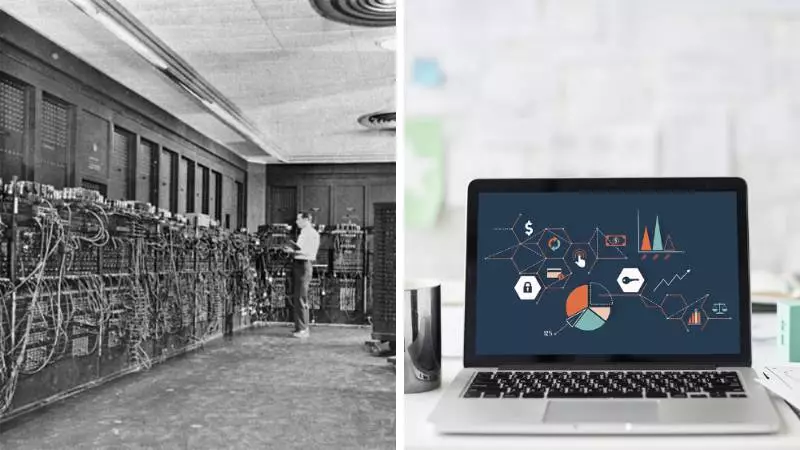
#7. Computers
Over the last 20 to 30 years the world has experienced incredible advancements in computers that has fuelled the information revolution we are witnessing. The first computers were massive devices that took up whole rooms. Then, in the late 1970’s and early 80’s, the home computer in PC came about. Names like Tandy, Commodore 64 and IBM became synonymous with the spread of computers into the home. If you’re old enough then you likely remember the thick keyboards, massive tape or disk drives and heavy monitors with monochrome color. The 80’s. Today’s PCs are incredibly different in both looks and capabilities. Screens are now super-thin, keyboards are smaller and a single tower, without floppy drive slots, now replaces all the various ‘Bricks’ and modules that made up those old computers. Of course, this doesn’t even take into consideration laptops or tablets. The size of a book, these portable computers would have blown the minds of an 80’s computer nerd. Well, at least until they discovered there was no 5 1/4 inch drive to load up Jump man JR.
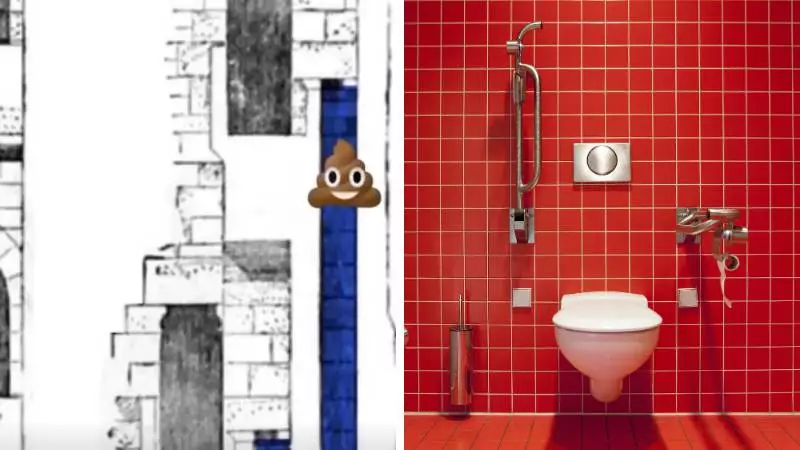
#8. Toilet
Before the second half of the 19th century, what we think of as a toilets didn’t really exist. So, when you wanted to take care of business, it pretty much meant you had to either use a chamber pot, an outhouse or any old hole in the ground. Even the super-rich and powerful who lived in massive castles didn’t have a decent toilet. They simply sat on a seat and their waste fell down through a large shaft into a room or moat below. Come to think of it, medieval times must have also been pretty stinky. Since none of those options sound really appealing to us, we sure are glad they developed the modern flush toilet. While today’s toilets are fairly simple looking devices, they are miles ahead of anything that was available a couple hundred years ago. Even some of the most modern toilet designs today look nothing like the potty you and I grew up with. There are small compact toilets that transform to move out of the way with a push of a button. There are even fancy and super-expensive facilities that transform like some sort of massive Swiss army toilet.

#9. Television
In the early 2000S, televisions underwent a rather dramatic change across the board. If you lived through any part of the 20th century, then you know exactly what we are talking about. The first television sets were developed throughout the 1930S and 40S. They became commercially available around that time and as programming became available the television took off through the 1950S and 60S. These sets were generally large and boxy and had relatively small square screens. As the decades passed, larger sets became available but they were still thick and heavy overall. Then, with the arrival of high definition and the switch from 4:3 to 16:9 broadcast format, the television changed significantly. Those square thick boxes were replaced with wider yet thinner sets. This change also made its way into computer monitor technology, as offices everywhere got rid of their bulky monitors and replaced them with much slimmer designs. Today, the televisions we see everywhere look nothing like the sets that were so common just 20 years ago. In fact, if you told a family in the 1980s that one day you could hang a 70 Inch television on the wall just like a piece of art, they’d probably look at you as if you were crazy. Ok, so do you have an Answer for our Quiz? Do you know the amount of time the average American spends watching television every day? The Answer: around 5 hours. When you consider how many shows there are to binge watch, we’re actually surprised it isn’t a lot higher.

Pranav Bhardwaj is the ultimate entertainment aficionado, with an unbridled passion for all things pop culture. With a keen eye for the latest trends and a deep love for music, movies, and television, Pranav has made it his mission to bring the world of entertainment to life through his words.
